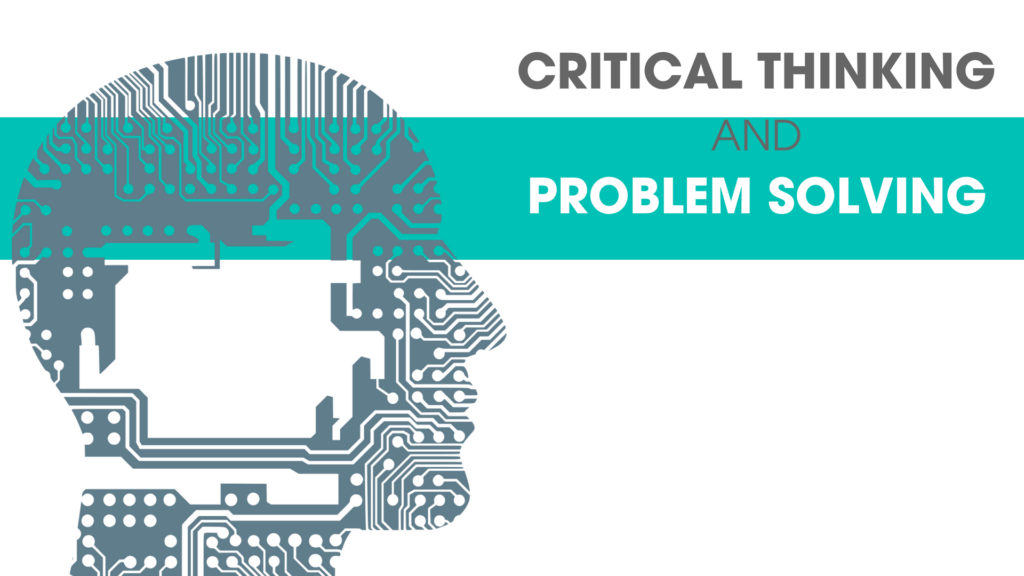Six ways to improve your critical thinking
Every day, an ocean of decisions springs before us. Some are small and insignificant, but others have a bigger impact on our lives — i.e., ‘Which politician should I vote for?’; ‘Should I try the latest diet trend?’ or ‘Will email make me a crorepati?’ Below Prof. Kishore Sharma of Taxila Business School clarifies 6 tips to mend your critical thinking. We’re bombed with so many decisions that it’s terrible to make a perfect choice each time. But, there are many ways to mend our chances — and one predominantly effective technique is critical thinking. .
This is a way of reaching a question that allows us to carefully analyze a circumstance, reveal its hidden issues — like unfairness and manipulation — and make the best decision. If the critical part sounds negative, that’s since, in a way, it is. Rather than selecting an answer as it ‘feels right’, a person who uses critical thinking subjects all existing choices to scrutiny and skepticism. Using the tools at their disposal, they’ll remove the whole thing but the most useful and trustworthy information. There are many diverse ways of approaching critical thinking, but here’s one 6 step approach that may help you resolve any number of difficulties:
Critical thinking the process of thinking about one’s own thinking through a number of rational skills and characters that, when applied through focussed, self-regulated, thoughtful judgment, increases the chances of generating a logical solution to a difficult situation or a valid assumption to an argument

How to think critically in day-to-day situations. Here are six simple tips:
1: Frame your question:
In other words, know what you’re looking for. This isn’t always as direct as it sounds, i.e. if you’re determining whether to try out the latest diet trend, your reasons for doing so may be concealed by other factors — like statements that you’ll see results in just three weeks. But, if you approach the circumstances with a clear view of what you’re actually trying to achieve by dieting — whether that’s weight loss, better nutrition, or having more energy — that’ll prepare you to sift through this information critically, find what you’re looking for, and decide whether the new trend really outfits your wants.
2. Use your critical thinking for issues that matter, don’t misuse it frequently:
Critical thinking is required when you care about your decisions or when the significance of a decision is impactful. If we start thinking critically about every single decision we take (i.e. what color to wear today? What to have in lunch? Do I need lemon or green tea?), we would be psychologically tired before we even got to work in the morning!
3. Do it in the morning:
Are you a night owl, do you best perform at night? If you answered yes, then you’re lying to yourself, whether you understand it or not. No-one does their best work at night unless, of course, you wake up in the sunset! People disburse their cognitive energy on decisions through the day, leading to a higher chance of poor decisions as the load accumulates, such as at night. Thus, to dodge decision fatigue, make sure to complete the important matters in the morning.
To dodge decision fatigue, ensure to finish the work that troubles most in the morning.
4. Take a step back
Reflective judgment is acentral aspect of critical thinking. In simple terms, it’s the acknowledgement of limited knowledge and how this uncertainty can affect decision-making processes. It’s about taking a step back and thinking about an argument or problem a little bit lengthier and considering the basis for the reasons and costs of responding in a specific way. Research specifies that delaying a decision by even a tenth of a second can meaningfully increase decision accuracy. I’m not telling that tenth of a second will benefit you solve all your problems, it is very important to take that “reflective step back” when developing or concluding a solution or assumption if you care about your decision and use critical thinking.
“To think critically, we must get rid of emotions, negative and positive, from our mind”.
5. Play devil’s advocate
Our gut intuition is always going to offer its judgment and tell us what it thinks we should do – and we can’t turn it off. This instruction is going to be biased, strengthened by similar experiences or choices in the past. In the perspective of critical thinking, a good way of learning to overcome this bias and, likewise, the auto-pilot processing of our gut is through playing devil’s advocate and truly seeing another possibility.
6. Leave emotions at the home
If we want to be able to think critically, we must remove our principles, attitude, arrogances, opinions, beliefs and personal experiences from the equation, all of which are emotionally charged. To think critically, there is only space for realistic evidence, so we must remove emotions, negative and positive, from our thinking.
